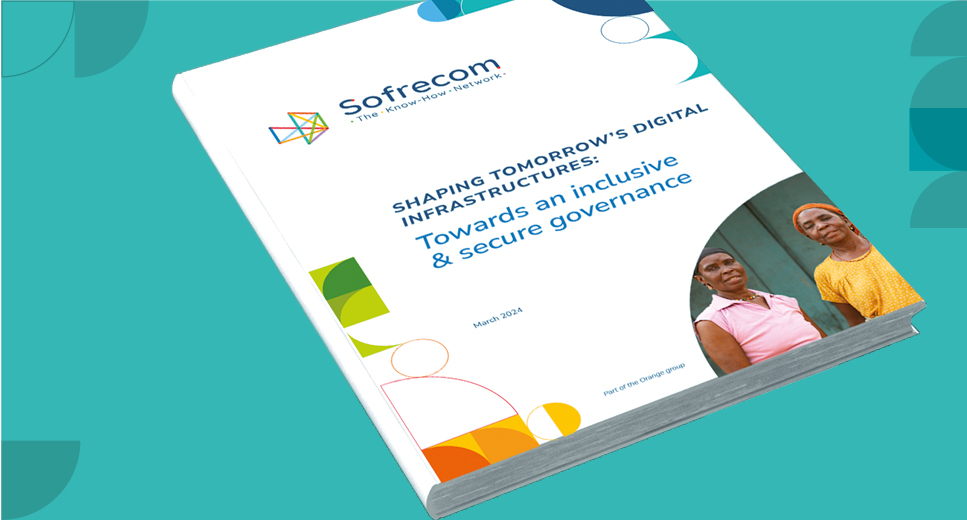
To promote inclusion, particularly financial inclusion, of citizens, the digital identity system must be interoperable in order to become accessible to both public and private service providers.

As of late 2022, a staggering 850 million individuals globally remained without official identification documents recognized by their respective governments. The majority of these ‘invisible’ citizens are concentrated in Africa and South Asia. Despite this glaring gap, there are well-established solutions available to harness digital identification as a powerful tool for fostering inclusivity.
More people lack proper identification
While most states have a national identification system in place, millions of citizens remain excluded from the system. These individuals, unable to prove their identity, are often vulnerable members of society— children without birth certificates, women, rural residents, and the economically disadvantaged who are distant from the education system.
According to the World Bank’s Identification for Development (ID4D) initiative in 2021, three main reasons explain these situations:
- The need to provide supporting documents (46%) and the complexity of registration procedures
- Geographical distance from registration points (44%) and the need for multiple visits
- Transportation costs and prohibitively high registration fees (40%)
Adding to this is the distrust of citizens towards the lack of human efficiency or technical reliability throughout the registration process.
Even when individuals manage to register, difficulties can persist:
- Identification data may not be reliable: Issues such as inaccurate birth dates inconsistent spelling of names across different identification documents for the same individual, and the lack of a unique identification number to mitigate problems of homonymy are prevalent.
- Civil registries and other identification databases are not updated: Common issues include failure to report marriages, births, or deaths, neglecting to renew expired identification documents, and the absence of integration between databases of different public services such as civil registry, social protection, taxes, and social safety nets.
Significant implications for marginalized communities
These deficiencies place citizens in a state of exclusion. A citizen unable to prove their identity will face significant hurdles in accessing public services such as social safety nets, healthcare, and education; exercising their civil rights, including voting; and utilizing essential services, such as telecommunications, financial services, and insurance.
Providers are prohibited by regulations from offering services to individuals without proper identification, as this measure aims to safeguard against potentially fraudulent activities. Moreover, the absence of reliable identification complicates, and in some cases, entirely obstructs, the secure authentication of users when delivering services.
In cases of partial identification, providers may offer limited access, as observed in many countries within the West African Economic and Monetary Union (WAEMU), where mobile money operators restrict transaction amounts. In doing so, they establish a functional identity separate from the legally-recognized foundational identity.
Possessing a valid proof of identity is not just a privilege but a fundamental right and a gateway to accessing government assistance, financial services, and employment opportunities. Solutions exist to implement a robust and interoperable digital identity system that can serve as a powerful tool for inclusion.
National digital identity strategy deployment
The fundamental step for states— responsible for providing access to services for their populations— is to strengthen the civil registry system. In recent years, many governments have launched programs to implement National Digital Identity Systems as part of projects like WURI (West Africa Unique Identification for Regional
Integration and Inclusion), financed by the World Bank.
These programs aim to strengthen the civil registry system by creating a centralized database at the government level. They implement a unique identification number to ensure data reliability and quality. Furthermore, they can be enhanced by integrating biometric features unique to each individual. These initiatives are coupled with a
massive registration campaign aimed at identifying all citizens and providing them with a unique formal identification document recognized by the state.
Advancing program integration in digitalization
Practical insights have underscored the value of cross-checking databases across various administrations to effectively reach the majority of the population. As evidenced by the ID4D 2022 annual report: «Research findings from G2Px on the social protection response to COVID-19 across 80+ countries revealed that nations equipped to leverage and cross-check existing administrative databases successfully reached approximately half of their population (on average), whereas those lacking this capability reached a mere 16%.»
By interlinking databases from diverse public services, governments ensure wider population coverage concerning identification and service provision. Moreover, this approach streamlines administrative oversight and automates data updates, thereby mitigating the risks associated with human error. It optimizes governmental resources and simplifies procedures for citizens.
Consequently, governments stand to gain significantly by embedding the establishment of their digital identification system within a broader state digitalization strategy.
Harnessing digitalization for inclusion
To promote inclusion, especially financial inclusion, the digital identity system must be interoperable to become accessible to both public and private service providers. If they can rely on a reliable identification system that meets regulatory requirements, providers can implement a simplified registration process. For instance, when incorporating biometric recognition solutions, the digital identity solution also strengthens the user authentication process when delivering the service. Making such a solution available to providers facilitates reliable and secure access for citizens to essential services.
Universal Digitalization
The ultimate step involves fully digitizing certain procedures (renewal, service requests, etc.) so that citizens can carry them out remotely and autonomously, without the need to physically visit offices. This requires the implementation of reliable digital solutions for remote person recognition.
To operationalize this system, it’s crucial to coordinate its launch with the rollout of connectivity in rural areas, alongside awareness campaigns and education initiatives focusing on digital skills and the digital economy. This entails facilitating individuals’ access to affordable smartphones and electrified charging points.






